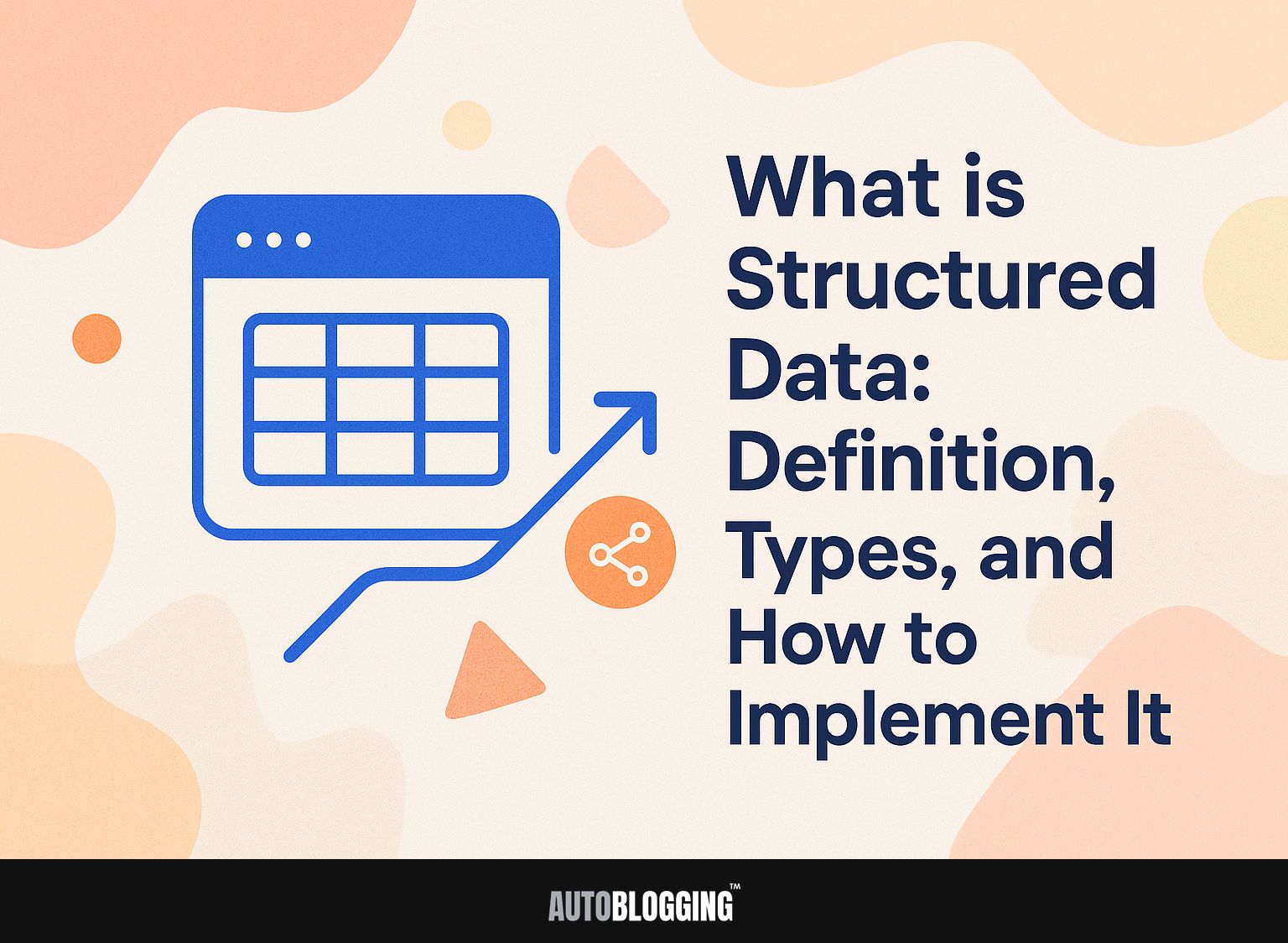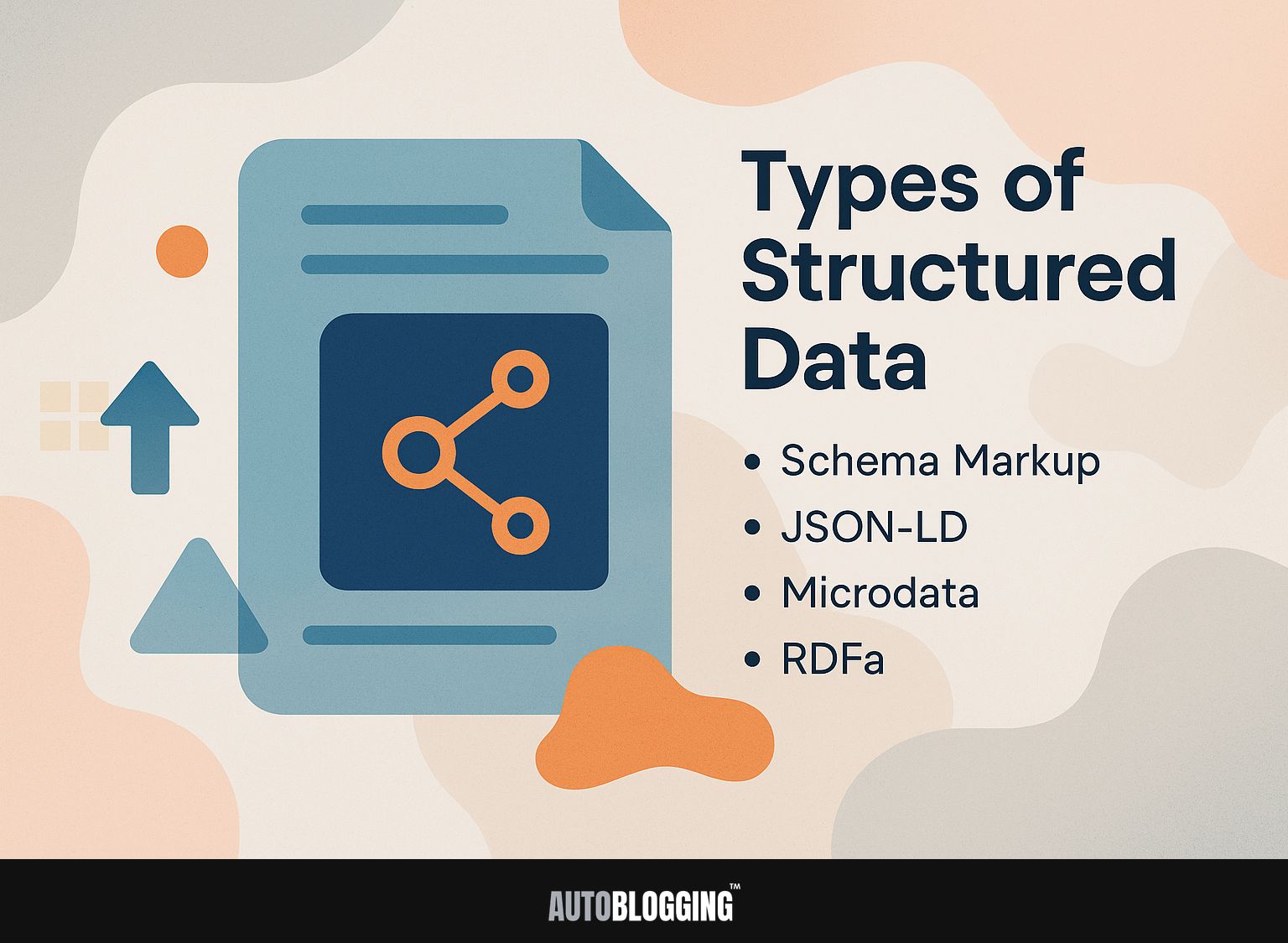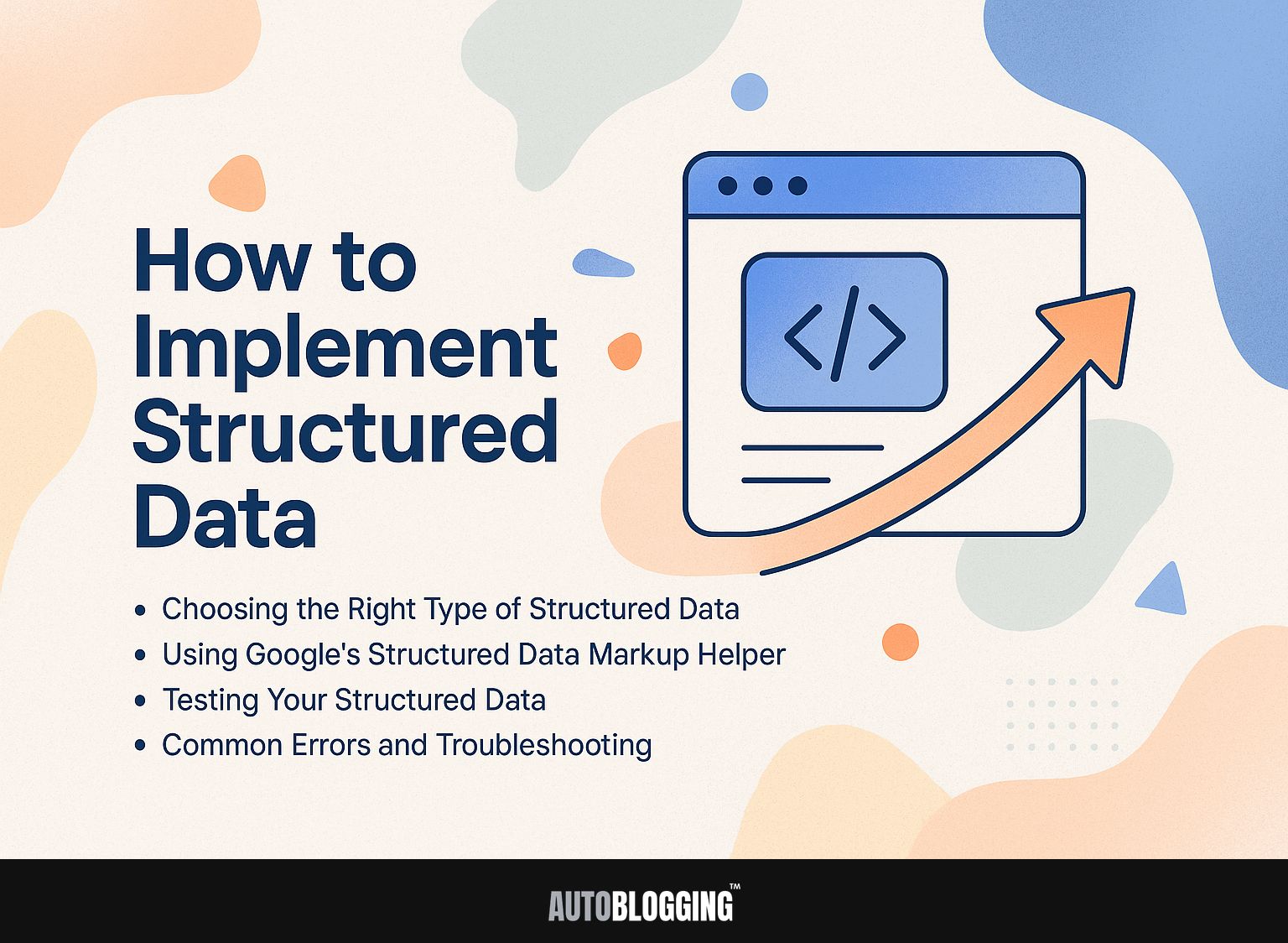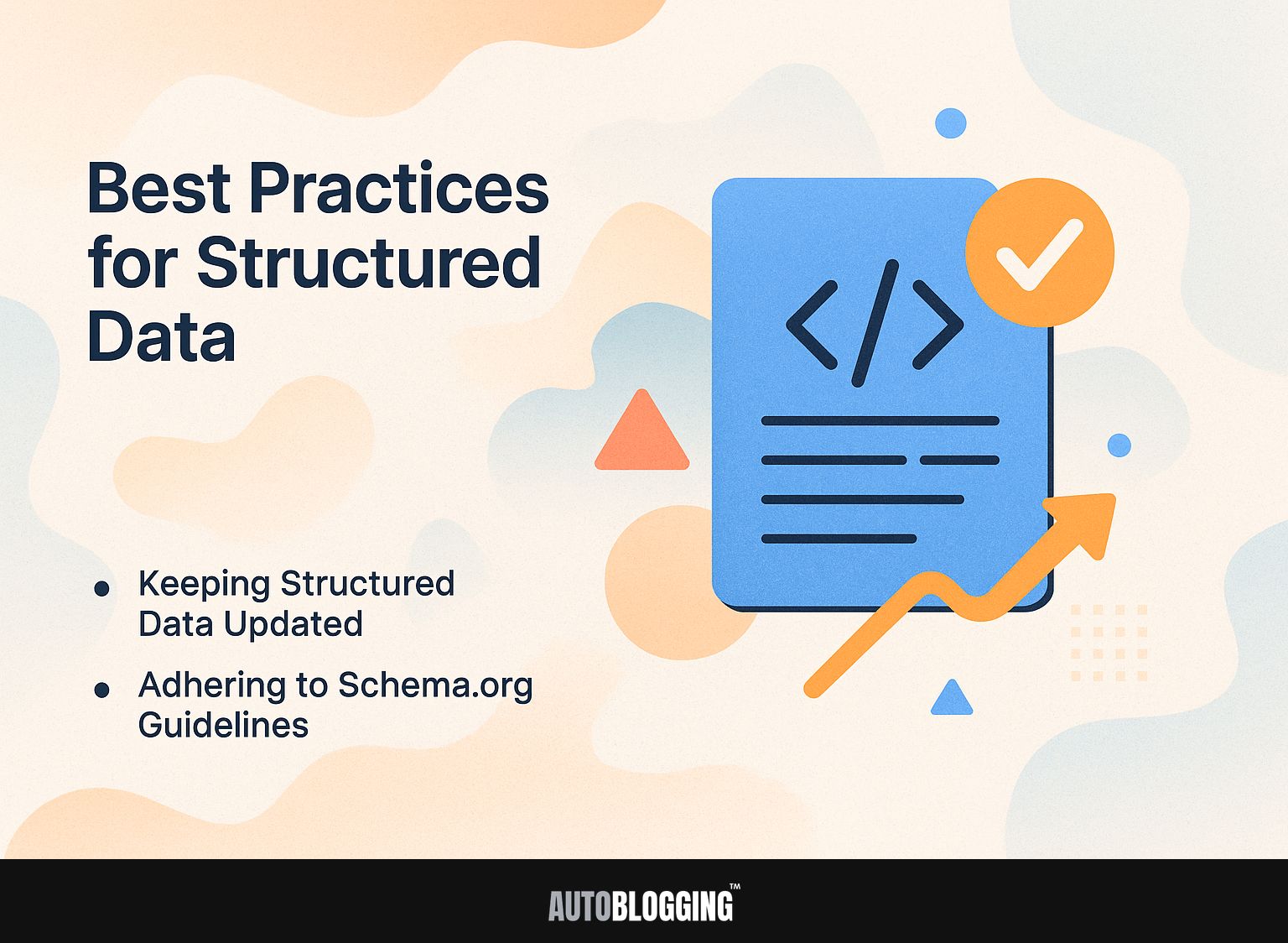Structured data is changing the way we handle information, setting it apart from unstructured data. In data analysis and machine learning, knowing how to work with organized information in SQL databases is essential. This article will explain what structured data is, discuss its different forms, and walk you through ways to use it. By the end, you’ll learn how using structured data can improve your SEO work and increase your site’s visibility.
Key Takeaways:
- Structured data is a method of organizing website content to make it more easily understood by search engines. It can help improve SEO and user experience.
- The different types of structured data include Schema Markup, JSON-LD, Microdata, and RDFa. Each has its own syntax and purpose.
- To implement structured data, choose the right type, use Google’s Markup Helper, and test for errors. Stick to established guidelines and keep informed about upcoming developments.
Contents
1. What is Structured Data?
Structured data is organized information arranged in a consistent way. It is often kept in relational databases, and SQL is used to access and retrieve it easily. This format makes it easy to ask questions and analyze data, helping businesses quickly understand important information.
For instance, a company might maintain customer information in a SQL database with organized tables for names, contacts, and purchases. By applying SQL queries, they can quickly identify purchasing trends or segment customers based on behavior.
Tools like Microsoft SQL Server and MySQL help manage structured datasets, offering strong features for data analysis and business reporting.
2. Importance of Structured Data in SEO
Utilizing structured data can increase click-through rates by up to 30%, significantly enhancing your website’s SEO performance through better indexing. Incorporating structured data, such as Schema.org markup, helps search engines understand your content better.
For instance, adding schema markup for reviews can generate rich snippets, which display ratings directly in search results. This increases visibility and can lead to more people interacting.
Tools such as Google’s Structured Data Markup Helper can help apply this markup correctly. Checking your structured data with Google’s Rich Results Test helps improve your website’s performance and user experience.
Types of Structured Data
Knowing the various types of structured data helps you choose the right formats that follow search engine rules. For a deeper understanding of how search engines process this information, consider exploring our insights on indexing and search engine techniques.
1. Schema Markup
Schema markup is a code that you put on your website to help search engines understand your content, resulting in rich snippets in search results.
This code is based on structured data vocabulary that includes key components such as types (e.g., Article, Product), properties (e.g., name, description), and context (e.g., JSON-LD format).
Putting schema markup into content helps improve SEO by making it show up more in search results and getting more clicks. For example, adding ‘Recipe’ schema to a cooking blog can display the star rating and cooking time directly in search results.
For instructions and samples on adding schema markup to your website, go to schema.org. This will help make your site better for search engines.
2. JSON-LD
JSON-LD (JavaScript Object Notation for Linked Data) provides a clear way to structure data, making it simple to use with modern web applications. This simplicity allows quicker use and connection compared to formats like XML, which can be complex.
The format involves key-value pairs within curly braces, which makes it easy to understand and create.
One of the main advantages of JSON-LD is its native compatibility with APIs, allowing data to be easily shared and understood across different platforms.
For example, you can define a person with the following snippet: {“@context”http://schema.org “@type”Person “name”John Doe “url”http://johndoe.com”.
This simplicity results in quicker approval and application compared to formats like XML, which can be complicated.
3. Microdata
Microdata is an HTML specification used to nest metadata within existing content, allowing search engines to better understand the context of the content.
Setting up microdata requires a few simple steps.
- Begin by identifying the content type, such as products or articles.
- Use schema.org to find the appropriate schema markup for your items.
- For instance, an e-commerce site might implement the “Product” schema to specify details like price, availability, and reviews.
- Tools like Google’s Structured Data Markup Helper can help create the needed code.
The pros include improved SEO and richer search results, while the cons might involve the initial learning curve and maintenance.
Successful examples include large retailers that show product ratings directly in search results.
4. RDFa
RDFa (Resource Description Framework in Attributes) allows you to include data that machines can read in HTML5 documents, making it useful for applications that work with semantic web technologies.
Web developers can use RDFa to make data more compatible across their websites. By embedding metadata directly in HTML tags, RDFa enables richer search results and better content categorization.
For example, using RDFa with schema.org vocabularies can help search engines better interpret product details, resulting in improved visibility.
Developers can implement tools like the RDFace plugin for WordPress, which simplifies adding RDFa attributes. Use tools like the Google Structured Data Testing Tool to make sure data is correctly identified, helping to increase traffic and interaction.
Benefits of Using Structured Data
Using structured data can make a website more visible on search engines, which often results in more visitors and better user interaction. To enhance these benefits, it’s important to apply ethical optimization strategies. Learn more about white hat SEO techniques to ensure your website remains compliant while maximizing visibility.
1. Improved Search Engine Visibility
Websites utilizing structured data see an increase in visibility, with Google rewarding them with higher rankings and rich snippet features in search results.
For example, a local restaurant’s website added organized information for its menu and location, leading to a 40% increase in visitors over three months.
In the same way, an online store that used product schema saw a 60% rise in organic visits and better visibility in mobile search results.
Tools like Google’s Structured Data Markup Helper and Schema.org provide user-friendly ways to add this markup, ensuring search engines interpret site content effectively. Regularly testing with Google’s Rich Results Test can also help maintain optimal performance.
2. Enhanced User Experience
Structured data improves user experience by showing detailed information directly in search results, which makes users happier.
Rich snippets can greatly raise the number of clicks on links; for example, research by Searchmetrics showed that websites with structured data experienced a 20-30% rise in clicks. Notably, products featuring ratings, review counts, or event dates attract more attention.
To implement these snippets, tools like Google’s Structured Data Markup Helper make it simple, guiding you through the markup process. Using the Rich Results Test often checks if your structured data is correctly arranged, improving your presence and interaction in search results.
3. Rich Snippets and Rich Results
Rich snippets, made possible through structured data, can lead to a significant increase in click-through rates, often reported at 20-30% higher than standard results. These improved search results show different things like star ratings in reviews, product prices, and how long recipes take to cook.
To implement rich snippets, start by using Google’s Structured Data Markup Helper to create the necessary schema code. For example, a cooking website might arrange its details to display the time required for recipes and provide user ratings, making it more appealing.
Successful sites, like AllRecipes, use these snippets effectively, resulting in improved visibility and engagement. Regularly check your markup with Google’s Rich Results Test for accuracy.
How to Implement Structured Data
Adding structured data requires choosing the correct type, using tools, and following guidelines to properly add it to your web pages.
1. Choosing the Right Type of Structured Data
Picking the correct type of structured data is important for achieving your SEO objectives and aligning with search engine requirements.
To choose the right structured data type, consider your content’s purpose. For e-commerce sites, use ‘Product’ schema to display items clearly and improve rich snippets in search results.
If you operate a recipe blog, the ‘Recipe’ schema is ideal, as it allows users to see ratings and cooking times directly in search results. Visual content, like videos, benefits from ‘VideoObject’ schema.
Start by evaluating your business goals-whether to drive sales or increase user engagement-and select the structured data that aligns with these objectives.
2. Using Google’s Structured Data Markup Helper
Google’s Structured Data Markup Helper is a very useful tool that helps users create and add structured data to their websites successfully.
To use the Markup Helper, start by visiting the tool’s website and selecting the type of data you want to mark up, such as articles, events, or products. Next, input the URL of the page or paste the HTML. Highlight the relevant content and use the sidebar to select the appropriate schema types.
Once finished, preview the generated code and download it. For best practices, check that your choices are correct and test your arranged data using Google’s Rich Results Test to confirm it works properly.
3. Testing Your Structured Data
Using tools like Google’s Rich Results Test checks that your structured data is correctly set up and works as expected.
To begin, input your URL or paste the HTML containing your structured data into the tool. Click ‘Test URL’ to assess your markup.
Once the test completes, review the results for any errors or warnings. Common issues include missing required properties or incorrect formats, such as misaligned types (e.g., using a product type where a recipe type is expected).
Resolve these errors as indicated, then re-test to confirm your changes are effective. Regular checks help keep your SEO running well and improve your search result visibility.
4. Common Errors and Troubleshooting
Problems in using structured data can hurt SEO results. These problems include missing details and wrong formatting, which need quick fixing.
To address these issues, start by using Google’s Structured Data Testing Tool to identify errors in your schema markup.
Common errors include missing required properties such as ‘name’ or ‘image’ in product markup. Make sure your JSON-LD is properly organized and check your structured data with the newest rules on Schema.org.
Regularly monitoring your site’s performance in Google’s Search Console can help you spot any flagged warnings or rich result features that aren’t displaying correctly.
By rectifying these common pitfalls, you’ll improve visibility in search engine results.
Best Practices for Structured Data
Following recommended methods for organized data makes sure your setup works well and meets search engine rules, leading to improved outcomes. Worth exploring: On-Page SEO techniques and best practices can further enhance your data strategy.
1. Keeping Structured Data Updated
It’s important to update your structured data often to keep it working well, especially when you change content or when new schema types come out.
To manage updates effectively, create a plan to review them every three months. Begin by auditing your existing structured data to identify outdated or missing elements.
Use tools like Google Search Console to monitor schema errors. Track schema updates through the Schema.org website.
When new schema types come out, check if they apply to your content and use them quickly if they do. This method helps your website maintain a positive relationship with search engines, making it more visible and enhancing how users interact with it.
2. Adhering to Schema.org Guidelines
Following Schema.org guidelines is essential for ensuring your structured data meets the standards set by search engines for proper indexing.
To find the newest Schema.org resources, go to their official website. It provides detailed information on different schema types. It’s important to regularly check this documentation because standards change over time.
Use Google’s Structured Data Testing Tool to check that your setup follows the rules. Stay informed about updates through Schema.org’s blog or their GitHub repository, which showcases recent changes.
By following these rules and using these tools, you’ll improve your site’s search visibility and overall SEO results effectively.
Case Studies
Looking at actual examples helps understand how structured data can be used successfully and the real advantages it offers to websites in different fields.
1. Successful Implementation Examples
Websites like Yelp and Amazon have used structured data to improve search visibility and engage users, showing impressive SEO outcomes.
For instance, Yelp implemented schema markup for its business listings, which resulted in a 30% increase in organic traffic over six months.
Similarly, Amazon’s use of structured data for product pages improved their click-through rates by 25%, leading to higher sales.
Another example is IMDb, which included organized data for movie ratings, leading to a 40% increase in user engagement. These case studies show how organized data can greatly improve search results and user engagement.
2. Lessons Learned from Failure
Knowing how to handle errors with structured information can save money and improve future work. Common pitfalls include misalignment with SEO goals, leading to irrelevant data being tagged, and improper schema markup.
For instance, a retailer might use product schema incorrectly, resulting in lost rich snippets in search results. To address these problems, businesses should frequently review their schema markup using Google’s guidelines and tools like Google’s Rich Results Test to check for correctness.
Ongoing training for teams working on implementation can significantly improve their grasp and application of structured data best practices.
Future of Structured Data
As technology gets better, upcoming changes in organized data will connect with AI tools, making data handling and usage more efficient. This evolution is crucial for SEO’s future, as highlighted in SEO’s evolution and the resilience of search strategies, where AI trends are reshaping how data is utilized.
Emerging Trends
New trends like combining machine learning with organized data will change how we analyze data and tailor content on different platforms. A major development is using Natural Language Processing (NLP) to improve the extraction of metadata from sources without a fixed format.
Tools like Google’s Cloud Natural Language API allow businesses to automatically label and sort content, which simplifies management. Integrating schema markup on websites improves search engine visibility and user engagement.
For example, a recipe site implementing structured data helps search engines display rich snippets, attracting more visitors. These updates simplify data handling and customize user interactions for increased involvement.
Frequently Asked Questions
1. What is Structured Data?
Structured data is information that is organized in a way that computers can read and analyze easily. It uses a set structure or data model, allowing people and computers to search and understand it easily.
2. What are the Types of Structured Data?
The three main types of structured data are XML, JSON, and CSV. XML is a markup language used for data exchange and storage, JSON is a lightweight data interchange format, and CSV is a simple file format for tabular data.
3. How is Structured Data Implemented?
Structured data can be implemented using various methods, including data modeling, database design, and coding. The data should be organized into fields and records based on a predefined schema, and can be stored in a database or in a file format.
4. What is the Difference Between Structured and Unstructured Data?
Structured data is arranged in a clear format, which makes it simple to look up and examine. Unstructured data, on the other hand, does not follow a specific format and is typically more difficult for computers to interpret. Examples of unstructured data include images, videos, and text documents.
5. Why is Structured Data Important?
Structured data is important in data analysis and decision making because it makes storing, getting, and analyzing information simple. It also helps in creating consistency and accuracy in data processing, leading to more efficient and effective business operations.
6. How Can Businesses Benefit from Implementing Structured Data?
By using organized information, companies can better manage their data, work more effectively and correctly, and learn useful things from their data. This helps in making informed decisions, identifying patterns and trends, and improving business performance.









